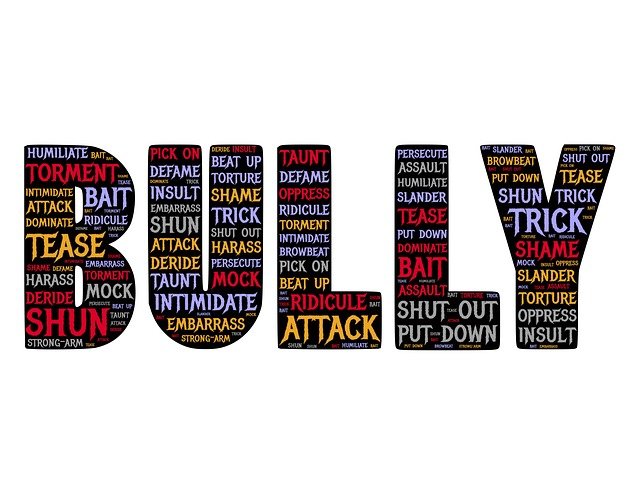Anti-Bullying Programs Don't Work And Here's Why
This past semester I did quite a bit of research on the topic of bullying. The question I was interested in answering was "do programs to prevent or lower bullying rates actually work and which techniques work best?"
Bullying is a big topic of discussion in the United States. I am constantly reading news stories about children who have been bullied, schools passing new policies about bullying, anti-bullying programs, and more. Because bullying is a big issue, I was curious to see how effective anti-bullying programs have been at solving this problem and which techniques are helpful.
In my research I was extremely surprised to find out that anti-bullying programs don't work. There are plenty of scholarly articles discussing evaluations of anti-bullying programs and overall there is a consensus that more often than not, they are ineffective at combating the issue of bullying.

Individual Programs Vs School-wide Programs
The least effective anti-bullying programs are the ones that are individualistic. Having a guest speaker come in and talk to kids for one class, giving kids pamphlets, making them watch a film, and nothing else is what I mean by individualistic programs. These programs last for only a short period of time. Kids pay attention for a moment, then forget the lesson shortly after. Individualistic programs are a waste of time because they don't influence levels of bullying. Schools spend money on these programs but they are a waste of resources.
School-wide programs have better results but they still have major flaws. A school-wide program means the entire school has numerous anti-bullying practices in place and the entire school works together to combat bullying. Principals, teachers, staff, students, and parents all play a role in teaching students about the negative impacts of bullying. Because the entire school is designed to focus on preventing bullying, schools have better results in lessening the problem.
The big issue with school-wide programs is they take lots of time, resources, money, and dedication. They require schools to restructure how they do things. Not all schools have the ability to do this. School-wide programs may work better but they take a lot of resources which most schools don't have so instead individual programs are used as a cheap way of looking like they are dealing with the problem.
(source Smith, Schneider, Smith, and Ananiadou 2004).

Little Kids Accept Anti-Bullying Lessons The Best
Age is another factor that determines when anti-bullying programs will work. Little kids are the only age group where these programs really work. Young elementary school kids are impressionable, don't have adult reasoning skills, and are more accepting of what adults teach them. Because of their age, young children accept anti-bullying lessons better and behave in more positive ways. (source Crothers 2006)
High School: The Biggest Challenge For Anti-Bullying Programs
Anti-bullying programs don't work for teenagers. They are the hardest age group to develop anti-bullying programs for. Teenagers have free will and critical thinking skills. Because they have a mind of their own, anti-bullying programs that exist now targeting teens fail. Teenagers who do bully choose to ignore anti-bullying lessons. They may turn the lessons into a joke to criticize them so that the lessons seem silly to other teens. (source Crothers 2006)
Teachers Are The Best Role Models
According to scholarly research, teachers are the main individuals who students listen to and can cause an anti-bullying program to succeed. They are role models, spend quality time with their students, and students are more likely to respect them. Research shows that principals, staff members, and other administrators aren't perceived in the same way as teachers to their students. Because students hold teachers in such high regard, this means they have to be the leaders to teach children to not bully. Many programs don't focus on the importance of teachers leading to anti-bullying program failures. Also, not all schools can afford training for all teachers to learn how to handle the issue of bullying. Without proper training, teachers may handle situations wrongly or ineffectively. (source Ferguson 2007)

There Is No One Size Fits All Model
Age, gender, culture, socioeconomic status, and other factors may influence the social structure of a school. When developing anti-bullying programs, all these factors and others must be taken into account to ensure lessons students will be taught and how they are taught will be effective. Like I mentioned before with teenagers, anti-bullying programs that are effective with younger children don't work with teenagers. Because there is a lack of research examining what anti-bully programs work and which don't, it is difficult to figure out what kinds of programs different schools should use.
Right now we live in a time where bullying is a focus of educators. Because most anti-bullying programs are new and being developed, more research needs to be done to figure out what works and what doesn't to develop better programs that don't waste time or school resources.
Bibliography
Crothers, L., Kolbert, J., Barker, W. (2006). Middle School Students' Preferences for Anti-Bullying Interventions. School Psychology International.
Ferguson, C., (2007). The Effectiveness of School-Based Anti-Bullying Programs: A Meta-Analytic Review. Criminal Justice Review (4)32, 401-414
Smith, J., Schneider, B., Smith, P., & Ananiadou, K. (2004). The Effectiveness of Whole-School Antibullying Programs: A Synthesis of Evaluation Research. School Psychology Review, 33(4), 547-560.

I am in the car and I as I was about to read this girl passed by with a stop bullying T-shirt on.
Do you think bullying is getting worse than when we were kids?
I really don't know. I have theories but I'm not sure. I do think that instances of bullying, school shootings, children committing suicide because they were bullied get more highly publicized than they did in the past. The media fear mongers and makes us believe things are worse. They also give those who would bully or do bad things ideas so that there are lots of copycats.
When I was a kid elementary school through high school were horrible for me because of bullies in a way. I have very few fond memories of school back then. I'd say bullying and the same mentality of exclusion of kids existed back then.
I was bullied in elementary school, I still have nightmares about that. I think kids were more savage then but now kids hide behind screens to torment others. I wish there was a solution, I think it should start at home.
I don't have many fond memories of high school either.
I agree. I think what IS different is that it's easier to bully as it can now be done at a distance through FB or texting. And maybe kids who would have thought twice about bullying someone face to face would find it easier at a distance.
And maybe it's easier to commit suicide now, both logistically and because it's more talked about, so it's more visible. And that probably makes it seem more acceptable.
Not good news that awareness of it isn't improving the situation :-(
I don't know if it is necessarily getting worse, but I do believe that it is going unnoticed more and more. Cyber bullying is much more insidious than physical bullying in that it can go on for ages without being noticed, whereas a fight in the school yard is usually seen and quickly broken up and dealt with.
I know from teaching this topic in the past, as a part of an IT course, that people bullied via email, IM, text, etc, often don't know where, or whom, to turn to and so don't do anything for a long time. Cyber bullying is also relentless in that it can be 24/7, and cannot be turned off (switch off a phone, but messages are still there when you turn it back on), however, old bullying was generally restricted to school hours.
The constant nature of bullying today probably makes it more psychologically damaging than any bullying we would have experienced as kids (I'm talking 1980's) here.
Sadly I have actually seen it where the teachers join in, or worse even lead the charge!
Hi, great post.
I think it is about time to tackle this problem, though I do not think that it is increasing. Like many problems we have been finding just lately a name for the issues, so we are now starting to search for solutions.
Schools are generally breeding grounds for social problems, because we (at least we in Germany) force very different personalities to spend time on topics they do not necessarily like in a very confined space. That is creating stress unfolding into social problems.
We should neither ignore the problems nor blow them up until they seem to be impossible to solve.
I agree with you, @maxrab , it comes down to us teachers again. If a teenager has developed antisocial tendencies, we are almost helpless. Maybe that is a case for therapy, maybe there is no solution.
But in general we have an effect on our students. Sometime it is hard to distinguish bullying from what the teenies consider normal behavior. But where borders are crossed, we intervene. I never forget that I am a model for my students, so I emphasize positive behavior and control inadequate behavior the best I can. That is starting with language, I do not use swearwords in school.
Keep up the great work.
Schools are breeding grounds for bullying. When you talk to many adults you will find that if they weren't jocks or cheerleaders, then high school could be a very unpleasant experience. I think bullying is more of a problem than when I was in school.
Bulliying should be eliminated, because it is not good for the psychology of children. Teachers and parents should play an important role in bulliying issues. They should teach their children that bulliying is a bad deed. I was a bulliying victim when I was in junior high school. Until now I still feel not confident when dealing with people around me.